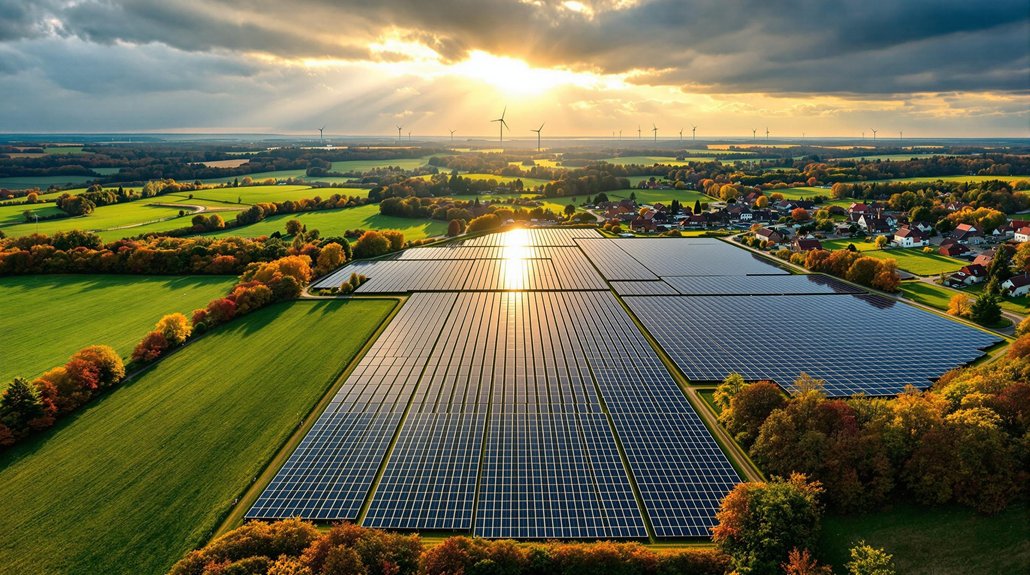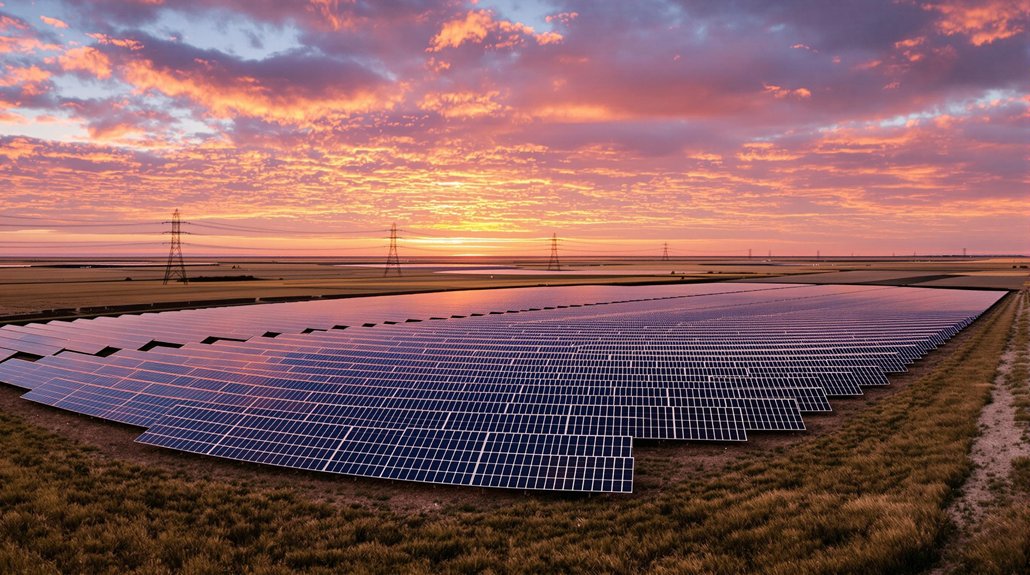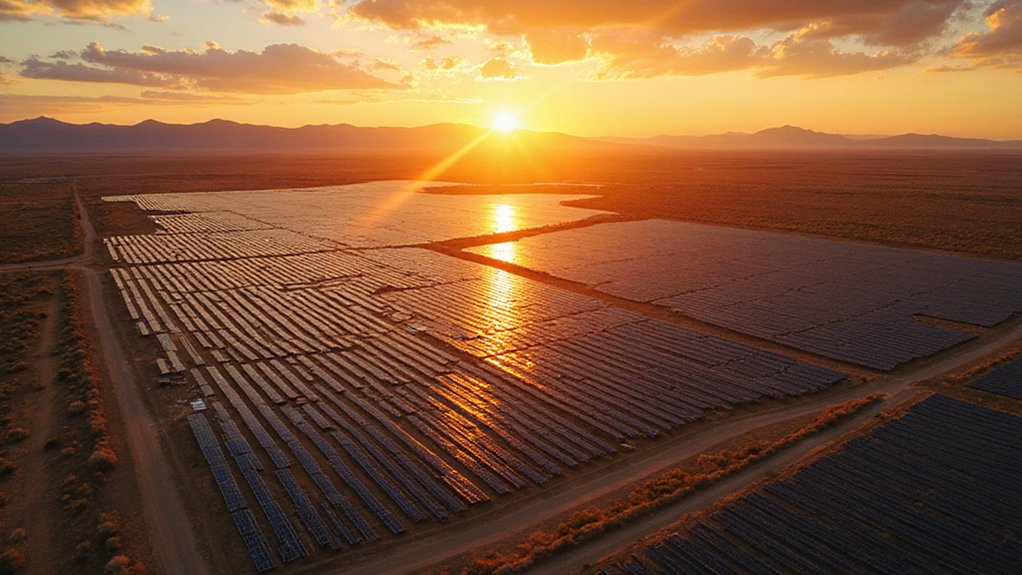Germany just smashed through the 100GW solar capacity barrier, joining China, USA, and India at the renewable energy big table. Pretty impressive for a country that’s basically cloudy all the time. They added a whopping 1.12GW in January 2025 alone. Solar now covers 14% of their electricity needs, with renewables hitting 59% total. Their 215GW goal by 2030 shows they’re just getting warmed up.
Germany has smashed through the 100-gigawatt solar barrier, joining an exclusive club of renewable energy powerhouses. With 100.8GW of operational photovoltaic capacity reached by December 2024, the European nation now stands shoulder-to-shoulder with clean energy giants China, the USA, and India. Not bad for a country famous for cloudy skies and beer gardens.
The Germans aren’t slowing down either. They kicked off 2025 by adding another 1.12GW in January alone. That’s like building a massive power plant in just 31 days. Even those tiny balcony solar setups contributed 19.3MW in January. Every little bit counts, right?
What’s driving this solar explosion? Ground-mounted solar parks grew a whopping 40% last year, adding 6.3GW. Business rooftops jumped 25%. Even regular homeowners are getting in on the action, with 38GW now coming from residential rooftops. And those plug-in balcony systems? Demand doubled. Germans love efficiency, even when it comes to their sun-catching gadgets.
The results speak for themselves. Solar now covers 14% of Germany’s electricity consumption, up from 12% in 2023. Combined with wind power, renewables generated 59% of total electricity last year. That’s 254.9TWh of clean energy. Not too shabby.
Looking ahead, Germany’s ambitions are massive. They’re aiming for 215GW of solar by 2030. Over one million new installations were registered in 2024 alone, showing tremendous momentum toward this goal. The German Solar Association (BSW) reports this achievement as part of the country’s commitment to renewables. These installations provide significant economic advantages through tax credits and increased property values for German homeowners. Experts think they’ll hit 130GW by the end of 2026. That’s a lot of panels.
It’s not all sunshine and rainbows, though. Grid stability is becoming an issue with all this solar power flooding the system. Politicians need to remove market barriers and stabilize regulations. The residential segment actually slowed down 15% last year. Growing pains.
Germany’s solar success story makes one thing clear: with forward-thinking policies and determination, even cloudy countries can become solar superpowers. Other nations take note. This is how it’s done.







